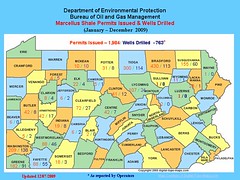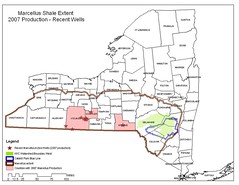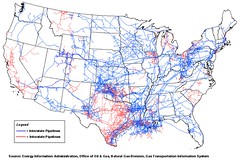THE WHITE HOUSE
Office of the Press Secretary
For Immediate Release May 12, 2009
EXECUTIVE ORDER - - - - - - -
CHESAPEAKE BAY PROTECTION AND RESTORATION
By the authority vested in me as President by the Constitution and the laws of the United States of America and in furtherance of the purposes of the Clean Water Act of 1972, as amended (33 U.S.C. 1251 et seq.), and other laws, and to protect and restore the health, heritage, natural resources, and social and economic value of the Nation's largest estuarine ecosystem and the natural sustainability of its watershed, it is hereby ordered as follows:
PART 1 – PREAMBLE
The Chesapeake Bay is a national treasure constituting the largest estuary in the United States and one of the largest and most biologically productive estuaries in the world. The Federal Government has nationally significant assets in the Chesapeake Bay and its watershed in the form of public lands, facilities, military installations, parks, forests, wildlife refuges, monuments, and museums.
Despite significant efforts by Federal, State, and local governments and other interested parties, water pollution in the Chesapeake Bay prevents the attainment of existing State water quality standards and the "fishable and swimmable" goals of the Clean Water Act. At the current level and scope of pollution control within the Chesapeake Bay's watershed, restoration of the Chesapeake Bay is not expected for many years. The pollutants that are largely responsible for pollution of the Chesapeake Bay are nutrients, in the form of nitrogen and phosphorus, and sediment. These pollutants come from many sources, including sewage treatment plants, city streets, development sites, agricultural operations, and deposition from the air onto the waters of the Chesapeake Bay and the lands of the watershed.
Restoration of the health of the Chesapeake Bay will require a renewed commitment to controlling pollution from all sources as well as protecting and restoring habitat and living resources, conserving lands, and improving management of natural resources, all of which contribute to improved water quality and ecosystem health. The Federal Government should lead this effort. Executive departments and agencies (agencies), working in collaboration, can use their expertise and resources to contribute significantly to improving the health of the Chesapeake Bay. Progress in restoring the Chesapeake Bay also will depend on the support of State and local governments, the enterprise of the private sector, and the stewardship provided to the Chesapeake Bay by all the people who make this region their home.
PART 2 – SHARED FEDERAL LEADERSHIP, PLANNING, AND ACCOUNTABILITY
Sec. 201. Federal Leadership Committee. In order to begin a new era of shared Federal leadership with respect to the protection and restoration of the Chesapeake Bay, a Federal Leadership Committee (Committee) for the Chesapeake Bay is established to oversee the development and coordination of programs and activities, including data management and reporting, of agencies participating in protection and restoration of the Chesapeake Bay. The Committee shall manage the development of strategies and program plans for the watershed and ecosystem of the Chesapeake Bay and oversee their implementation. The Committee shall be chaired by the Administrator of the Environmental Protection Agency (EPA), or the Administrator's designee, and include senior representatives of the Departments of Agriculture (USDA), Commerce (DOC), Defense (DOD), Homeland Security (DHS), the Interior (DOI), Transportation (DOT), and such other agencies as determined by the Committee. Representatives serving on the Committee shall be officers of the United States.
Sec. 202. Reports on Key Challenges to Protecting and Restoring the Chesapeake Bay. Within 120 days from the date of this order, the agencies identified in this section as the lead agencies shall prepare and submit draft reports to the Committee making recommendations for accomplishing the following steps to protect and restore the Chesapeake Bay:
(a) define the next generation of tools and actions to restore water quality in the Chesapeake Bay and describe the changes to be made to regulations, programs, and policies to implement these actions;
(b) target resources to better protect the Chesapeake Bay and its tributary waters, including resources under the Food Security Act of 1985 as amended, the Clean Water Act, and other laws;
(c) strengthen storm water management practices at Federal facilities and on Federal lands within the Chesapeake Bay watershed and develop storm water best practices guidance;
(d) assess the impacts of a changing climate on the Chesapeake Bay and develop a strategy for adapting natural resource programs and public infrastructure to the impacts of a changing climate on water quality and living resources of the Chesapeake Bay watershed;
(e) expand public access to waters and open spaces of the Chesapeake Bay and its tributaries from Federal lands and conserve landscapes and ecosystems of the Chesapeake Bay watershed;
(f) strengthen scientific support for decisionmaking to restore the Chesapeake Bay and its watershed, including expanded environmental research and monitoring and observing systems; and
(g) develop focused and coordinated habitat and research activities that protect and restore living resources and water quality of the Chesapeake Bay and its watershed.
The EPA shall be the lead agency for subsection (a) of this section and the development of the storm water best practices guide under subsection (c). The USDA shall be the lead agency for subsection (b). The DOD shall lead on storm water management practices at Federal facilities and on Federal lands under subsection (c). The DOI and the DOC shall share the lead on subsections (d), (f), and (g), and the DOI shall be lead on subsection (e). The lead agencies shall provide final reports to the Committee within 180 days of the date of this order.
Sec. 203. Strategy for Protecting and Restoring the Chesapeake Bay. The Committee shall prepare and publish a strategy for coordinated implementation of existing programs and projects to guide efforts to protect and restore the Chesapeake Bay. The strategy shall, to the extent permitted by law:
(a) define environmental goals for the Chesapeake Bay and describe milestones for making progress toward attainment of these goals;
(b) identify key measureable indicators of environmental condition and changes that are critical to effective Federal leadership;
(c) describe the specific programs and strategies to be implemented, including the programs and strategies described in draft reports developed under section 202 of this order;
(d) identify the mechanisms that will assure that governmental and other activities, including data collection and distribution, are coordinated and effective, relying on existing mechanisms where appropriate; and
(e) describe a process for the implementation of adaptive management principles, including a periodic evaluation of protection and restoration activities.
The Committee shall review the draft reports submitted by lead agencies under section 202 of this order and, in consultation with relevant State agencies, suggest appropriate revisions to the agency that provided the draft report. It shall then integrate these reports into a coordinated strategy for restoration and protection of the Chesapeake Bay consistent with the requirements of this order. Together with the final reports prepared by the lead agencies, the draft strategy shall be published for public review and comment within 180 days of the date of this order and a final strategy shall be published within 1 year. To the extent practicable and authorized under their existing authorities, agencies may begin implementing core elements of restoration and protection programs and strategies,
in consultation with the Committee, as soon as possible and prior to release of a final strategy.
Sec. 204. Collaboration with State Partners. In preparing the reports under section 202 and the strategy under section 203, the lead agencies and the Committee shall consult extensively with the States of Virginia, Maryland, Pennsylvania, West Virginia, New York, and Delaware and the District of Columbia. The goal of this consultation is to ensure that Federal actions to protect and restore the Chesapeake Bay are closely coordinated with actions by State and local agencies in the watershed and that the resources, authorities, and expertise of Federal, State, and local agencies are used as efficiently as possible for the benefit of the Chesapeake Bay's water quality and ecosystem and habitat health and viability.
Sec. 205. Annual Action Plan and Progress Report. Beginning in 2010, the Committee shall publish an annual Chesapeake Bay Action Plan (Action Plan) describing how Federal funding proposed in the President's Budget will be used to protect and restore the Chesapeake Bay during the upcoming fiscal year. This plan will be accompanied by an Annual Progress Report reviewing indicators of environmental conditions in the Chesapeake Bay, assessing implementation of the Action Plan during the preceding fiscal year, and recommending steps to improve progress in restoring and protecting the Chesapeake Bay. The Committee shall consult with stakeholders (including relevant State agencies) and members of the public in developing the Action Plan and Annual Progress Report.
Sec. 206. Strengthen Accountability. The Committee, in collaboration with State agencies, shall ensure that an independent evaluator periodically reports to the Committee on progress toward meeting the goals of this order. The Committee shall ensure that all program evaluation reports, including data on practice or system implementation and maintenance funded through agency programs, as appropriate, are made available to the public by posting on a website maintained by the Chair of the Committee.
PART 3 – RESTORE CHESAPEAKE BAY WATER QUALITY
Sec. 301. Water Pollution Control Strategies. In preparing the report required by subsection 202(a) of this order, the Administrator of the EPA (Administrator) shall, after consulting with appropriate State agencies, examine how to make full use of its authorities under the Clean Water Act to protect and restore the Chesapeake Bay and its tributary waters and, as appropriate, shall consider revising any guidance and regulations. The Administrator shall identify pollution control strategies and actions authorized by the EPA's existing authorities to restore the Chesapeake Bay that:
(a) establish a clear path to meeting, as expeditiously as practicable, water quality and environmental restoration goals for the Chesapeake Bay;
(b) are based on sound science and reflect adaptive management principles;
(c) are performance oriented and publicly accountable;
(d) apply innovative and cost-effective pollution control measures;
(e) can be replicated in efforts to protect other bodies of water, where appropriate; and
(f) build on the strengths and expertise of Federal, State, and local governments, the private sector, and citizen organizations.
Sec. 302. Elements of EPA Reports. The strategies and actions identified by the Administrator of the EPA in preparing the report under subsection 202(a) shall include, to the extent permitted by law:
(a) using Clean Water Act tools, including strengthening existing permit programs and extending coverage where appropriate;
(b) establishing new, minimum standards of performance where appropriate, including:
(i) establishing a schedule for the implementation of key actions in cooperation with States, local governments, and others;
(ii) constructing watershed-based frameworks that assign pollution reduction responsibilities to pollution sources and maximize the reliability and cost-effectiveness of pollution reduction programs; and
(iii) implementing a compliance and enforcement strategy.
PART 4 – AGRICULTURAL PRACTICES TO PROTECT THE CHESAPEAKE BAY
Sec. 401. In developing recommendations for focusing resources to protect the Chesapeake Bay in the report required by subsection 202(b) of this order, the Secretary of Agriculture shall, as appropriate, concentrate the USDA's working lands and land retirement programs within priority watersheds in counties in the Chesapeake Bay watershed. These programs should apply priority conservation practices that most efficiently reduce nutrient and sediment loads to the Chesapeake Bay, as identified by USDA and EPA data and scientific analysis. The Secretary of Agriculture shall work with State agriculture and conservation agencies in developing the report.
PART 5 – REDUCE WATER POLLUTION FROM FEDERAL LANDS AND FACILITIES
Sec. 501. Agencies with land, facilities, or installation management responsibilities affecting ten or more acres within the watershed of the Chesapeake Bay shall, as expeditiously as practicable and to the extent permitted by law, implement land management practices to protect the Chesapeake Bay and its
tributary waters consistent with the report required by section 202 of this order and as described in guidance published by the EPA under section 502.
Sec. 502. The Administrator of the EPA shall, within 1 year of the date of this order and after consulting with the Committee and providing for public review and comment, publish guidance for Federal land management in the Chesapeake Bay watershed describing proven, cost-effective tools and practices that reduce water pollution, including practices that are available for use by Federal agencies.
PART 6 – PROTECT CHESAPEAKE BAY AS THE CLIMATE CHANGES
Sec. 601. The Secretaries of Commerce and the Interior shall, to the extent permitted by law, organize and conduct research and scientific assessments to support development of the strategy to adapt to climate change impacts on the Chesapeake Bay watershed as required in section 202 of this order and to evaluate the impacts of climate change on the Chesapeake Bay in future years. Such research should include assessment of:
(a) the impact of sea level rise on the aquatic ecosystem of the Chesapeake Bay, including nutrient and sediment load contributions from stream banks and shorelines;
(b) the impacts of increasing temperature, acidity, and salinity levels of waters in the Chesapeake Bay;
(c) the impacts of changing rainfall levels and changes in rainfall intensity on water quality and aquatic life;
(d) potential impacts of climate change on fish, wildlife, and their habitats in the Chesapeake Bay and its watershed; and
(e) potential impacts of more severe storms on Chesapeake Bay resources.
PART 7 – EXPAND PUBLIC ACCESS TO THE CHESAPEAKE BAY AND CONSERVE LANDSCAPES AND ECOSYSTEMS
Sec. 701. (a) Agencies participating in the Committee shall assist the Secretary of the Interior in development of the report addressing expanded public access to the waters of the Chesapeake Bay and conservation of landscapes and ecosystems required in subsection 202(e) of this order by providing to the Secretary:
(i) a list and description of existing sites on agency lands and facilities where public access to the Chesapeake Bay or its tributary waters is offered;
(ii) a description of options for expanding public access at these agency sites;
(iii) a description of agency sites where new opportunities for public access might be provided;
(iv) a description of safety and national security issues related to expanded public access to Department of Defense installations;
(v) a description of landscapes and ecosystems in the Chesapeake Bay watershed that merit recognition for their historical, cultural, ecological, or scientific values; and
(vi) options for conserving these landscapes and ecosystems.
(b) In developing the report addressing expanded public access on agency lands to the waters of the Chesapeake Bay and options for conserving landscapes and ecosystems in the Chesapeake Bay, as required in subsection 202(e) of this order, the Secretary of the Interior shall coordinate any recommendations with State and local agencies in the watershed and programs such as the Captain John Smith Chesapeake National Historic Trail, the Chesapeake Bay Gateways and Watertrails Network, and the Star-Spangled Banner National Historic Trail.
PART 8 – MONITORING AND DECISION SUPPORT FOR ECOSYSTEM MANAGEMENT
Sec. 801. The Secretaries of Commerce and the Interior shall, to the extent permitted by law, organize and conduct their monitoring, research, and scientific assessments to support decisionmaking for the Chesapeake Bay ecosystem and to develop the report addressing strengthening environmental monitoring of the Chesapeake Bay and its watershed required in section 202 of this order. This report will assess existing monitoring programs and gaps in data collection, and shall also include the following topics:
(a) the health of fish and wildlife in the Chesapeake Bay watershed;
(b) factors affecting changes in water quality and habitat conditions; and
(c) using adaptive management to plan, monitor, evaluate, and adjust environmental management actions.
PART 9 – LIVING RESOURCES PROTECTION AND RESTORATION
Sec. 901. The Secretaries of Commerce and the Interior shall, to the extent permitted by law, identify and prioritize critical living resources of the Chesapeake Bay and its watershed, conduct collaborative research and habitat protection activities that address expected outcomes for these species, and develop a report addressing these topics as required in section 202 of this order. The Secretaries of Commerce and the Interior shall coordinate agency activities related to living resources in estuarine waters to ensure maximum benefit to the Chesapeake Bay resources.
PART 10 – EXCEPTIONS
Sec. 1001. The heads of agencies may authorize exceptions to this order, in the following circumstances:
(a) during time of war or national emergency;
(b) when necessary for reasons of national security;
(c) during emergencies posing an unacceptable threat to human health or safety or to the marine environment and admitting of no other feasible solution; or
(d) in any case that constitutes a danger to human life or a real threat to vessels, aircraft, platforms, or other man-made structures at sea, such as cases of force majeure caused by stress of weather or other act of God.
PART 11 – GENERAL PROVISIONS
Sec. 1101. (a) Nothing in this order shall be construed to impair or otherwise affect:
(i) authority granted by law to a department, agency, or the head thereof; or
(ii) functions of the Director of the Office of Management and Budget relating to budgetary,
administrative, or legislative proposals.
(b) This order shall be implemented consistent with applicable law and subject to the availability of appropriations.
(c) This order is not intended to, and does not, create any right or benefit, substantive or procedural, enforceable at law or in equity, by any party against the United States, its departments, agencies, or entities, its officers, employees, or agents, or any other person.
BARACK OBAMA
THE WHITE HOUSE,
May 12, 2009.
View document
HERE.DEMAND ACCOUNTABILITY!



















No comments:
Post a Comment